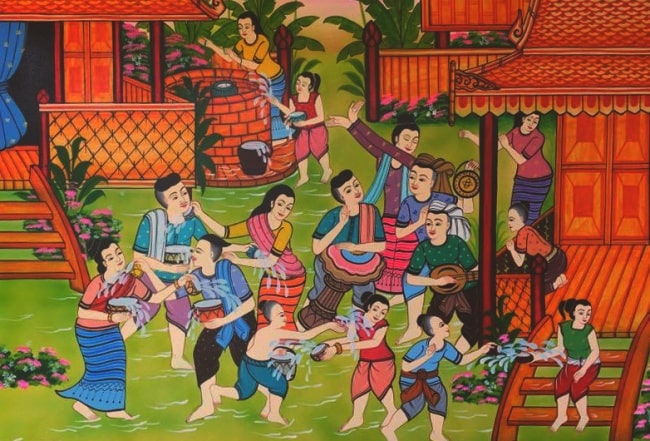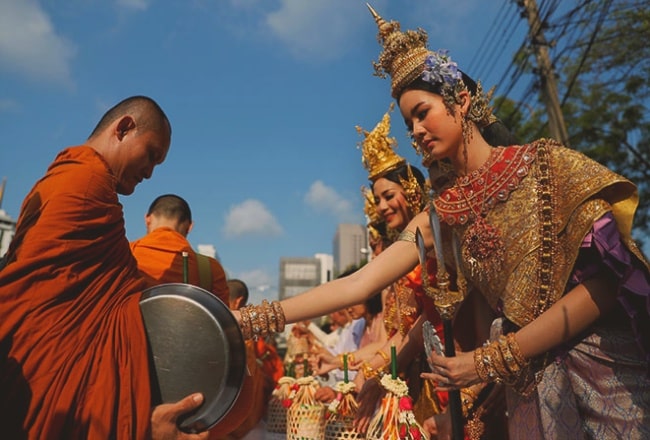Songkran is one of Thailand’s grandest and most important events. The Songkran Festival is a time when family and friends gather to pay gratitude to elders and visit temples for prayer and offering. Songkran literally means to pass or move into. The Songkran Festival is an amazing event in Thailand which is used to welcome the New Year. During this period, you will enjoy fun-filled local entertainments and fun. Depending on which area within Thailand, the celebration can last between 3 to 10 days.
The Songkran Festival is also a period when the Thai people cleanse and pour water mixed with Thai fragrance on Buddha images. The festival also showcases a bathing ritual where the people pour water on the senior Buddhist monks. This process is believed to bring good luck to them. After that, the chief monk will give a sermon and bless those who attend this bathing ritual.
In some areas in Thailand, Buddha images are paraded from one street to the other, allowing Thai people to shower them with water. The young people pay gratitude and also show a sign of respect to elders in a sacred ritual, which involves pouring down scented water on their hands and also giving them new clothes. This water festival in Thailand involves merry making, presenting offerings to monks, releasing birds and fishes into river, paying respect to elders, building sand pagodas, listening to sermons and, more importantly, splashing of water. This is believed to bring longevity, good health and prosperity.

In order not to bring bad luck into the New Year, it is a tradition that all houses are completely cleaned a day before the celebration. The Songkran Festival is a period when Thai people splash water on themselves, which they believe will cause plenty of rainfall in the coming year. Water is used to cleanse themselves of those bad things and a symbol of fertility.
As a tourist, you are presented with the opportunity of enjoying traditional Thai performances and know more about the history of Songkran. Other fun-filled activities include beauty contests, carnivals and parades. There are also several traditional foods to enjoy and great local sports activities.
In several cities across the country, locals celebrate the Songkran festival by splashing water over themselves with a word of blessing. Most young Thai people use pump-action water guns and pump buckets to soak themselves up. This water festival is one of the most loved and popular events in Thailand.
It is the festival that offers loads of excitement while welcoming the traditional Thai New Year with remarkable water splashes and getting all soaked up. The Songkran festival promises to be quite refreshing and fun.
Compared with other Thailand’s festival, Songkran is known to be the best.





 08/01/2026
08/01/2026





























Jolie LIEMMy name is Jolie, I am a Vietnamese girl growing up in the countryside of Hai Duong, northern Vietnam. Since a little girl, I was always dreaming of exploring the far-away lands, the unseen beauty spots of the world. My dream has been growing bigger and bigger day after day, and I do not miss a chance to make it real. After graduating from the univesity of language in Hanoi, I started the exploration with a travel agency and learning more about travel, especially responsible travel. I love experiencing the different cultures of the different lands and sharing my dream with the whole world. Hope that you love it too!